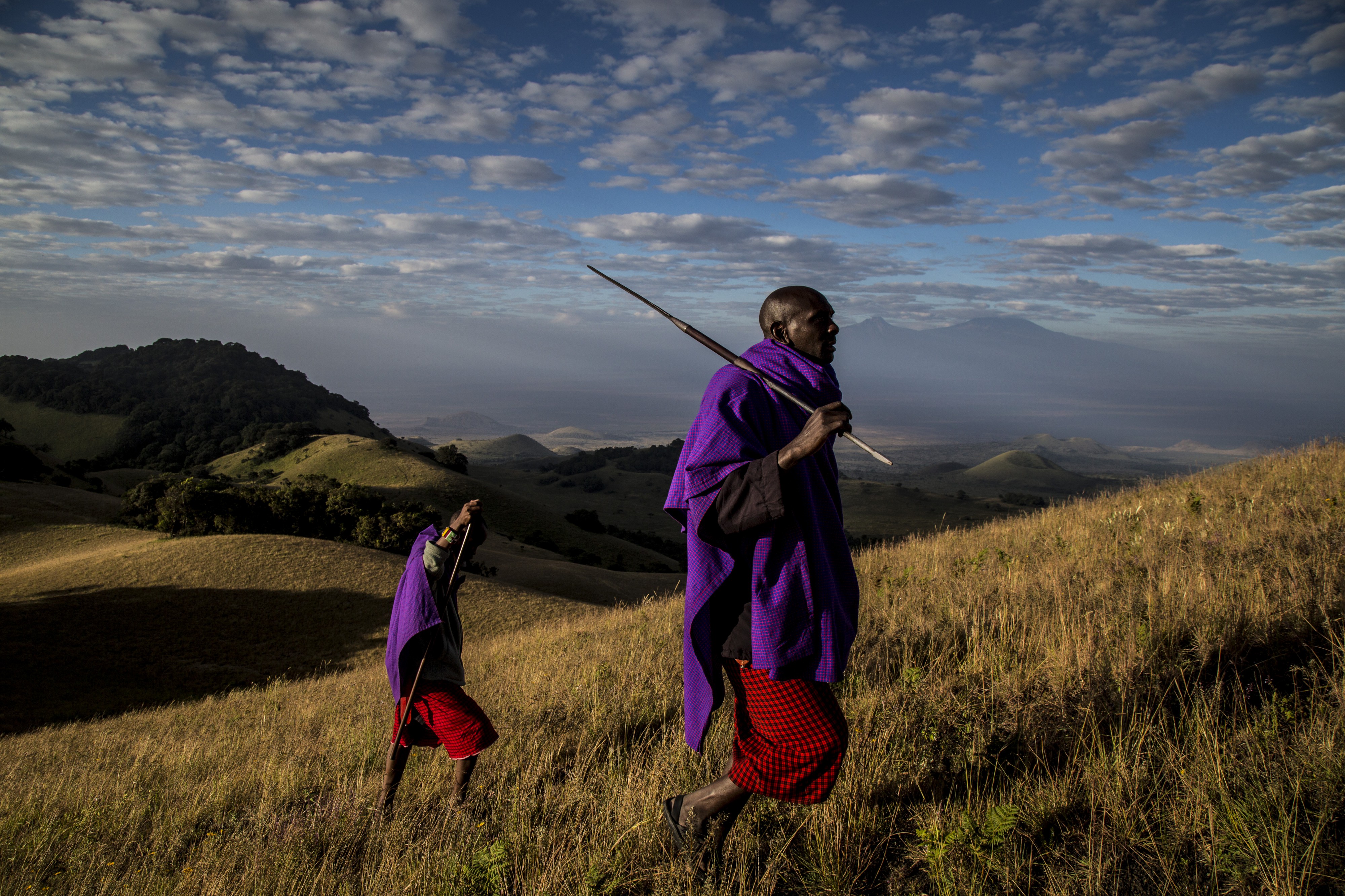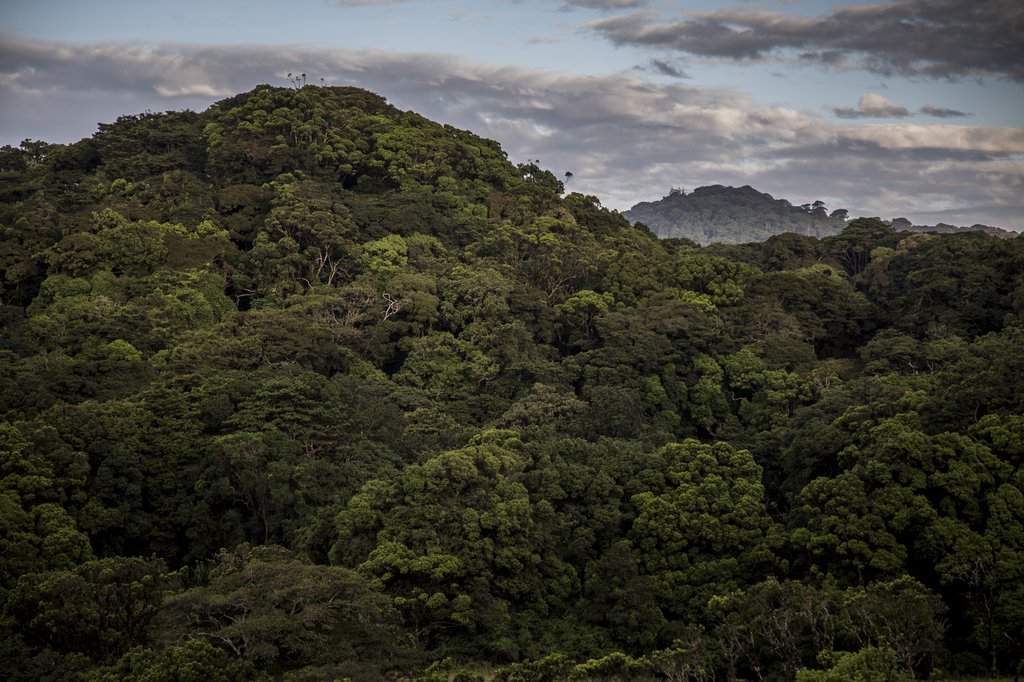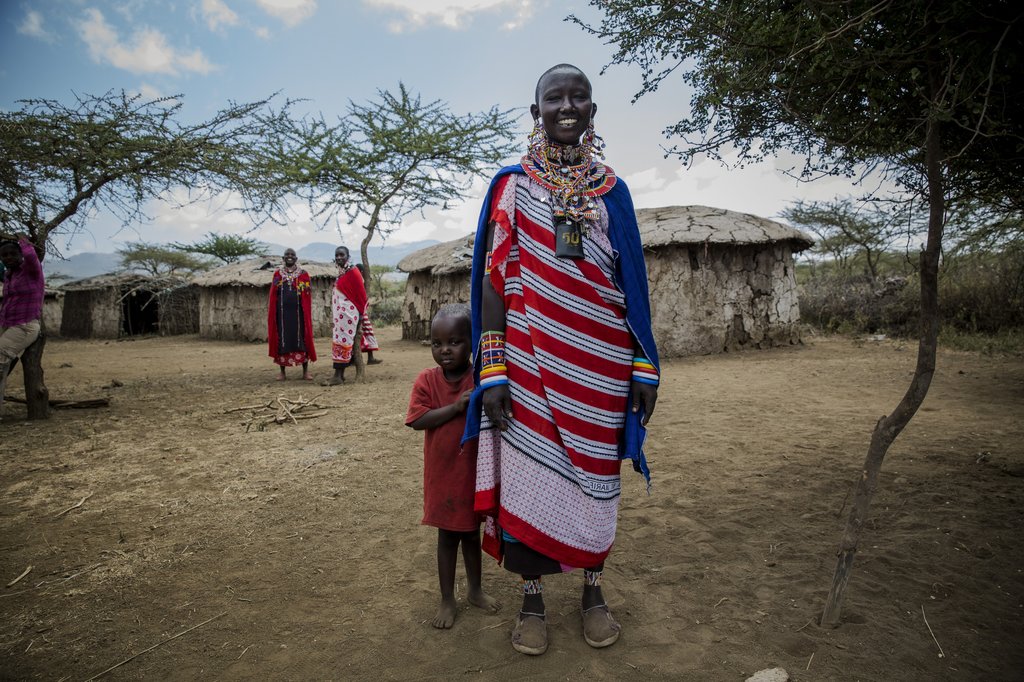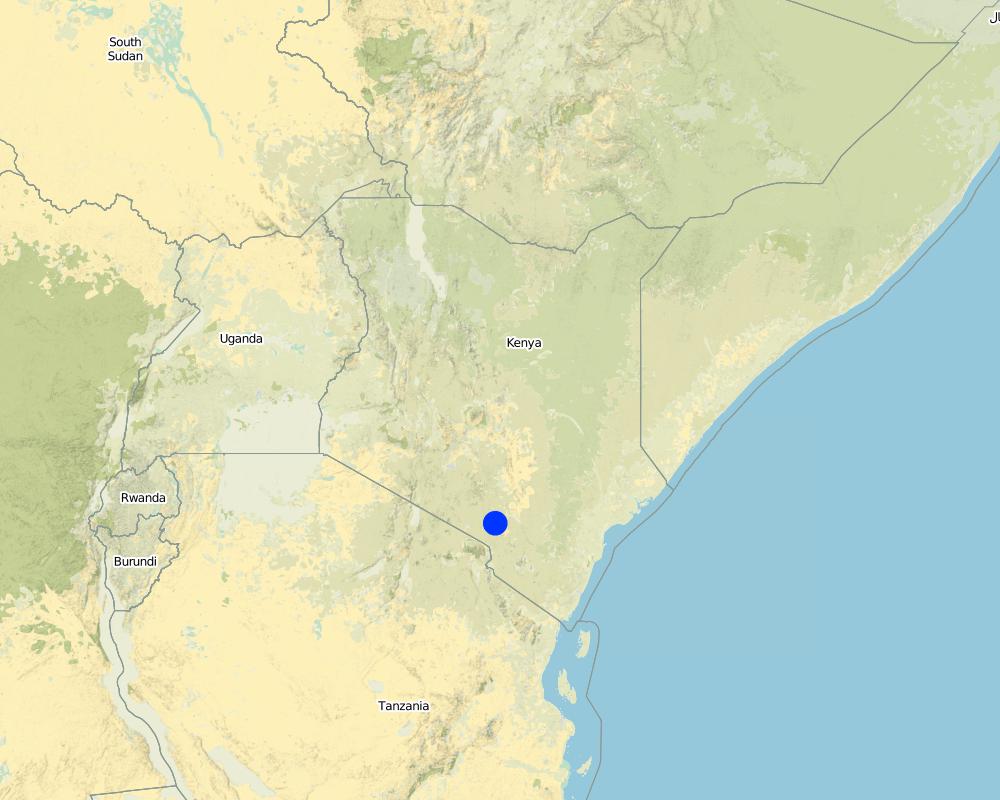Chyulu Hills Community REDD + Project [ເຄັນຢາ]
- ການສ້າງ:
- ປັບປູງ:
- ຜູ້ສັງລວມຂໍ້ມູນ: Peter Tyrrell
- ບັນນາທິການ: Christina Ender
- ຜູ້ທົບທວນຄືນ: Rima Mekdaschi Studer, Hanspeter Liniger, Donia Mühlematter
approaches_3426 - ເຄັນຢາ
ເບິ່ງພາກສ່ວນ
ຂະຫຍາຍທັງໝົດ ຍຸບທັງໝົດ1. ຂໍ້ມູນທົ່ວໄປ
1.2 ລາຍລະອຽດ ການຕິດຕໍ່ ຂອງບຸກຄົນທີ່ຊັບພະຍາກອນ ແລະ ສະຖາບັນ ການມີສ່ວນຮ່ວມ ໃນການປະເມີນຜົນ ແລະ ເອກະສານ ຂອງວິທີທາງ
ຊື່ຂອງໂຄງການ ທີ່ອໍານວຍຄວາມສະດວກ ໃນການສ້າງເອກກະສານ ຫຼື ປະເມີນດ້ານແນວທາງ (ຖ້າກ່ຽວຂ້ອງ)
Book project: Guidelines to Rangeland Management in Sub-Saharan Africa (Rangeland Management)1.3 ເງື່ອນໄຂ ຂອງການນໍາໃຊ້ເອກກະສານຂໍ້ມູນ ຂອງ WOCAT
ເມື່ອໃດທີ່ໄດ້ສັງລວມຂໍ້ມູນ (ຢູ່ພາກສະໜາມ)?
28/02/201
ຜູ້ສັງລວມ ແລະ ບັນດາຜູ້ຕອບແບບສອບຖາມ ຍອມຮັບໃນເງື່ອນໄຂ ການນໍາໃຊ້ຂໍ້ມູນເອກະສານ ທີ່ສ້າງຂື້ນ ໂດຍຜ່ານ ອົງການ WOCAT:
ແມ່ນ
1.4 ເອກະສານອ້າງອີງ (ຫຼາຍ) ກັບແບບສອບຖາມ (ຫຼາຍ) ເຕັກໂນໂລຢີ ຂອງດ້ານການຄຸ້ມຄອງ ດິນແບບຍືນຍົງ
2. ພັນລະນາ ແນວທາງການຄຸ້ມຄອງນໍາໃຊ້ດິນແບບຍືນຍົງ
2.1 ການອະທິບາຍ ໂດຍຫຍໍ້ ຂອງວິທີທາງ
The Chyulu Hills REDD+ project combines two government agencies, three local NGOs and four communities together under a unified banner, the Chyulu Hills Conservation Trust (CHCT). The objective is to set-up a 30-year ‘payment for ecosystem service’ scheme in the landscape. A main goal of the project is to improve grazing and livestock management to prevent further degradation of the rangeland and forest resources.
2.2 ການອະທິບາຍ ລາຍລະອຽດ ຂອງວິທີທາງ
ການອະທິບາຍ ລາຍລະອຽດ ຂອງວິທີທາງ:
The Chyulu Hills, in southern Kenya, are a volcanic mountain range approximately 100 km long, and form a central pillar of the much larger Tsavo-Amboseli ecosystem which constitutes several national parks, forest reserves and community-owned pastoral land. The emission reduction project established in 2011 under the REDD+ umbrella (Reducing Emissions from Deforestation and forest Degradation) covers 410,000 hectares of both community and public land around the hills. REDD+ offers financial incentives to developing countries to manage and use their forests responsibly. Payments are channelled through the Trust to support land users for quantifiably reducing emissions.
REDD+ creates financial value for the carbon stored in forests by offering incentives for developing countries to reduce emissions from forested lands and invest in low-carbon paths to sustainable development. REDD+ goes beyond simply stopping further deforestation and forest degradation by including sustainable management and enhancement of forest carbon stocks.
This area is home to 140,000 people including Maasai pastoralists to the west, and Kamba farming communities to the east. This land is widely used for livestock production; must of it under communal tenure. Recent pressures, notably increasing populations and changes in land tenure, have led to unsustainable uses of natural resources, threatening the functioning of the ecosystem, through the degradation of the rangeland and over-exploitation of forest resources. This includes cutting of trees for firewood, charcoal, uncontrolled fires, and weakening of traditional grazing management systems.
The Chyulu Hills REDD+ project aims to protect its rangeland and forest landscapes by creating an alternative income opportunity, and improving both livestock and rangeland management, while preventing the emission of over 18 million tons of carbon dioxide over the project’s 30-year lifetime.
This is the first REDD+ project in Kenya that is fully owned and managed by the local community, a vital factor in ensuring sustained impact. Through the project, land users receive financial support per hectare for maintaining or improving carbon stocks above and below ground. Previous REDD+ projects have often been criticised for not properly engaging local communities or addressing their needs.
To achieve this, the Chyulu Hills Conservation Trust (CHCT) was formed in 2015 to act as the project governing body. The Trust represents multiple stakeholders from the community, government, and local NGOs including the Maasai Wilderness Conservation Trust (MMWCT), Big Life Foundation (BLF), and the David Sheldrick Wildlife Trust (DSWT). The government is also represented through the Kenya Wildlife Service (KWS) and Kenya Forest Service (KFS), whose mandates include the Chyulu Hills National Park and the Kibwezi Forest Reserve. The national park is used on an informal basis by the communities for dry season grazing, although access is severely limited by water, and also by disease.
The communities are represented by four Maasai group ranches, who manage the land and its resources. These group ranches are areas of communally titled land. The three NGOs have the technical capacity to advise, provide strategic guidance and assist in implementation of the project activities. They are already involved in helping communities to develop and manage conservation areas, and to improve sustainable use of natural resources.
Proceeds from the sale of Voluntary Emission Reductions (VERs) flow through the CHCT to initiatives/projects which benefit the community and environment. Early in 2017 the first verification was completed, and shortly afterwards the first marketable carbon credits went on sale, providing income to the CHCT for protecting and improving their carbon stock.
To ensure equitable and transparent sharing of proceeds from carbon sales, a revenue allocation model was implemented to fund (i) office and project costs, (ii) discretionary sub-projects, and (iii) to provide strategic investments to counter drivers of deforestation and land degradation.
The proposed investments into the CHCT area to improve rangeland condition comprise several components. The first component is to support grazing management plans to help restore governance over resources, and ensure sustainable use. This should encourage the recovery of perennial grasses, increase grass cover, and create a heterogeneous forage base. The second focus is value addition to beef marketing through collaborative partnerships. This should encourage pastoralists to focus on management of the rangelands to support the production of higher quality cattle. In the long run this will increase revenue generation for livestock farmers, and stimulate the communities to manage their rangeland better.
2.3 ຮູບພາບຂອງແນວທາງ
2.5 ປະເທດ / ເຂດ / ສະຖານທີ່ບ່ອນທີ່ແນວທາງໄດ້ຖືກນໍາໃຊ້
ປະເທດ:
ເຄັນຢາ
ພາກພື້ນ / ລັດ / ແຂວງ:
Kajiado and Makueni
ຂໍ້ມູນເພີ່ມເຕີມຂອງສະຖານທີ່:
Chyulu Hills
Map
×2.6 ວັນທີເລີ່ມຕົ້ນ ແລະ ສິ້ນສຸດ ການຈັດຕັ້ງປະຕີບັດ ວິທີທາງ
ສະແດງປີຂອງການເລີ່ມຕົ້ນ:
2011
ຄວາມຄິດເຫັນ:
The approach began in 2011, but the REDD+ project's form start date is September 2013. Please see the timeline figure.
2.7 ປະເພດຂອງແນວທາງ
- ພາຍໃຕ້ໂຄງການ / ແຜນງານ
2.8 ເປົ້າໝາຍ / ຈຸດປະສົງຫຼັກ ຂອງການຈັດຕັ້ງປະຕິບັດ ວິທີທາງ
Provide carbon based funding to a local community trust to protect and improve the management of the Chyulu Hills and the surrounding ecosystem.
This project aims to:
- Deliver community benefits (such as health care, school bursaries, and income generating activities)
- Enhance forest protection (through protection, management and monitoring)
- Protect biodiveristy
- Restore degraded rangelands (improved livestock management and marketing)
- Enhance local governance
2.9 ເງື່ອນໄຂອໍານວຍ ຫຼື ຂັດຂວາງການປະຕິບັດຂອງເຕັກໂນໂລຢີ / ເຕັກໂນໂລຢີການນໍາໃຊ້ຕາມແນວທາງ
ສັງຄົມ / ວັດທະນະທໍາ / ມາດຕະຖານ ແລະ ຄຸນຄ່າທາງສາສະໜາ
- ເຊື່ອງຊ້ອນ
Consensus needs to be built between all community members who own and manage land under a communal title. This requires many meetings at various scales and with multiple stakeholders to ensure that consensus is reached, and that the resulting project is fair for all.
ມີຄວາມສາມາດ / ເຂັ້າເຖິງຊັບພະຍາກອນດ້ານການເງິນ ແລະ ການບໍລິການ
- ອໍານວຍ
Financial resources were made available at the start by two international NGOs, namely the African Wildlife Foundation (AWF); and Conservation International (CI), which are not on the formal Board of CHCT. This allowed for the expensive process to be undertaken, including development of the Trust, and the process of carbon stock validation and sales.
- ເຊື່ອງຊ້ອນ
The sale of carbon credits is a limiting factor in revenue generation to run the project and implement activities.
ການກໍ່ຕັ້ງສະຖາບັນ
- ອໍານວຍ
Creation of the Chyulu Hills Conservation Trusts as a landscape institution ensures that all partners (community, government and NGO's) act for the good of the landscape, manage it collectively, and develop consensus on this approach.
ການຮ່ວມມື / ການປະສານງານຂອງຜູ້ກ່ຽວຂ້ອງ
- ອໍານວຍ
The Chyulu Hills Conservation Trust has a project office in the landscape and a Board of Trustees overseeing project implementation which greatly increases collaboration of actors with joint work plans.
ກ່ຽວກັບກົດໝາຍ (ສິດນໍາໃຊ້ດິນ, ສິດນໍາໃຊ້ນໍ້າ)
- ເຊື່ອງຊ້ອນ
Different parts of the landscape are managed by various authorities, such as National Park and Forest reserves by the government agencies, Kenya Wildlife Service and Kenya Forest Service respectively. The remaining area is under community land, which is titled as group ranches, a form of community land tenure in Kenya. The division between the two groups, the government and the community, can potentially cause conflict over access to forage, forest resources and water use.
ຄວາມຮູ້ກ່ຽວກັບການຄຸ້ມຄອງ ທີ່ດິນແບບຍືນຍົງ, ການເຂົ້າເຖິງການສະໜັບສະໜູນ ທາງດ້ານວິຊາການ
- ອໍານວຍ
The incorporation of a diverse set of NGOs into the project brings a range of SLM options and access to technical support.
3. ການມີສ່ວນຮ່ວມ ແລະ ບົດບາດຂອງພາກສ່ວນທີ່ກ່ຽວຂ້ອງທີ່ໄດ້ມີສ່ວນຮ່ວມ
3.1 ຜູ້ມີສ່ວນຮ່ວມ ໃນວິທີທາງ ແລະ ພາລະບົດບາດ ຂອງເຂົາເຈົ້າ
- ຜູ້ນໍາໃຊ້ດິນໃນທ້ອງຖິ່ນ / ຊຸມຊົນທ້ອງຖິ່ນ
Kuku Group Ranch
Kuku A Group Ranch
Mbirikani Group Ranch
Rombo Group Ranch
The communities are the owners of livestock and natural resources. They are nee in the formulation of strategies, in particular grazing management, in their areas.
- ອົງການຈັດຕັ້ງ ທີ່ບໍ່ຂື້ນກັບລັດຖະບານ
Maasai Wilderness Conservation Trust
Big Life Foundation
David Sheldrick Wildlife Trust
These three NGO oversee the management of natural resources (each has agreements with the respective communities) and provide support for administration of the grants, technical and implementing expertise, and strategy development. They each operate in distinct geographical areas across both community and public land.
- ພະນັກງານຂັ້ນສູນກາງ (ຜູ້ວາງແຜນ, ຜູ້ສ້າງນະໂຍບາຍ)
Kenya Wildlife Service
Kenya Forest Service
These two stakeholders are responsible for the management and project implementation within the officially gazetted protected areas. The Kenya Forest Service is instrumental in the national decision making and policy for the national REDD + programme.
- ອົງການຈັດຕັ້ງ ສາກົນ
Conservation International
Functions as an advisory board member, providing strategic and technical guidance.
3.2 ການມີສ່ວນຮ່ວມຂອງຜູ້ນໍາໃຊ້ທີ່ດິນໃນທ້ອງຖິ່ນ / ຊຸມຊົນທ້ອງຖິ່ນໃນໄລຍະທີ່ແຕກຕ່າງກັນຂອງແນວທາງ
| ການລວບລວມ ເອົາຜູ້ນໍາໃຊ້ດິນ ໃນທ້ອງຖິ່ນ / ຊຸມຊົນທ້ອງຖິ່ນ | ໃຫ້ລະບຸ ຜູ້ໃດທີ່ມີສ່ວນຮ່ວມ ໃນແຕ່ລະກິດຈະກໍາ? | |
|---|---|---|
| ການເລີ່ມຕົ້ນ / ແຮງຈູງໃຈ | ການຮ່ວມມື | Initial conversations were motivated by two international NGOs (Conservation International and the African Wildlife Foundation). The project partners then held a large number of community meetings under the principle of free prior and informed consent (FPIC) to develop a unified platform to begin the process of investigating a mechanism in order to create an inclusive and fair REDD+ project (mainly lead by KWF). |
| ການວາງແຜນ | ການຮ່ວມມື | Planning of the project activities to be carried out under the REDD+ project was undertaken through a wide consultative process led by Conservation International, via community meetings and key information interviews. These are all captured in the Project Development Document (PDD) freely available online. |
| ການປະຕິບັດ | ການຮ່ວມມື | Implementation of the project was spearheaded by the project partners with technical and strategic guidance from Conservation International, including the validation, verification and initial sales of carbon credits. Local communities were closely involved in the development of the revenue allocation plan, the Trust structure, and development of the project activities and work plan. |
| ຕິດຕາມກວດກາ / ການປະເມີນຜົນ | ການຮ່ວມມື | M&E is conducted by all involved NGOs and government agencies, and coordinated by one NGO currently holding the Project Office. Community members are integral to the collection and interpretation of data during this process. |
3.4 ການຕັດສິນໃຈກ່ຽວກັບການຄັດເລືອກເຕັກໂນໂລຢີຂອງການຄຸ້ມຄອງທີ່ດິນແບບຍືນຍົງ / ເຕັກໂນໂລຢີ
ລະບຸ ຄົນທີ່ຕັດສິນໃຈ ກ່ຽວກັບການຄັດເລືອກຂອງ ເຕັກໂນໂລຢີ / ເຕັກໂນໂລຢີ ຈະໄດ້ຮັບການປະຕິບັດ:
- ພາກສ່ວນກ່ຽວຂ້ອງທັງໝົດ, ເປັນສ່ວນໜຶ່ງ ຂອງວິທີທາງແບບມີສ່ວນຮ່ວມ
ອະທິບາຍ:
Activities under this plan are implemented through both SLM experts and communities. The grazing management and livestock production activities originate from conversations between the communities, NGO partners and experts on rangeland management and livestock marketing and sale. These technologies are still in the early stages of development.
Specify on what basis decisions were made:
- ປະເມີນເອກກະສານ ຄວາມຮູ້ກ່ຽວກັບ ການຄຸ້ມຄອງ ທີ່ດິນແບບຍືນຍົງ (ຫຼັກຖານທີ່ຊ່ວຍໃນການຕັດສິນໃຈ)
- ຜົນທີ່ໄດ້ຮັບ ຈາກການຄົ້ນຄວ້າ
- ປະສົບການສ່ວນບຸກຄົນ ແລະ ຄວາມຄິດເຫັນ (ທີ່ບໍ່ເປັນເອກກະສານ)
4. ການສະໜັບສະໜູນທາງດ້ານວິຊາການ, ການສ້າງຄວາມສາມາດ, ແລະ ການຈັດການຄວາມຮູ້.
4.1 ການສ້າງຄວາມສາມາດ / ການຝຶກອົບຮົມ
ຜູ້ນໍາໃຊ້ທີ່ດິນ ຫຼື ພາກສ່ວນກ່ຽວຂ້ອງອື່ນໆ ໄດ້ຮັບການຝຶກອົບຮົມບໍ່?
ແມ່ນ
ໃຫ້ລະບຸ ຜູ້ໃດທີ່ໄດ້ຮັບການຝຶກອົບຮົມ:
- ຜູ້ນໍາໃຊ້ດິນ
- ພະນັກງານພາກສະໜາມ / ທີ່ປຶກສາ
ຖ້າເປັນໄປໄດ້, ໃຫ້ລະບຸເພດ, ອາຍຸ, ສະຖານະພາບ, ຊົນເຜົ່າ, ແລະ ອື່ນໆ:
A significant number of training has taken place so far. One example is training local women on grass seed bank management and farming, as well as building capacity of local scouts in wildlife data collection.
ຮູບແບບຂອງການຝຶກອົບຮົມ:
- ການເຮັດຕົວຈິງ
- ເນື້ອທີ່ສວນທົດລອງ
4.2 ການບໍລິການໃຫ້ຄໍາປຶກສາ
ເຮັດຜູ້ໃຊ້ທີ່ດິນມີການເຂົ້າເຖິງການບໍລິການໃຫ້ຄໍາປຶກສາ?
ບໍ່ແມ່ນ
4.3 ສະຖາບັນການສ້າງຄວາມເຂັ້ມແຂງ (ການພັດທະນາອົງການຈັດຕັ້ງ)
ສະຖາບັນ ໄດ້ຮັບການສ້າງຕັ້ງຂື້ນ ຫຼື ໄດ້ຮັບການສ້າງຄວາມເຂັ້ມແຂງ ໂດຍການຈັດຕັ້ງປະຕິບັດ ວິທີທາງບໍ່?
- ມີ, ຫຼາຍ
ລະບຸ ທາງສະຖາບັນ ໄດ້ສ້າງຄວາມເຂັ້ມແຂງ ໃນລະດັບໃດ (ຫຼາຍ):
- ທ້ອງຖິ່ນ
- ລະດັບພາກພື້ນ
ອະທິບາຍ ສະຖາບັນການຈັດຕັ້ງ, ພາລະບົດບາດ ແລະ ໜ້າທີ່ຮັບຜິດຊອບ, ສະມາຊິກ ແລະ ອື່ນໆ.
The Chyulu Hills Conservation Trust was established through this approach to bring together the two government agencies, the three local NGOs, and four community groups. The organisation is continually being strengthened with direct funding provided to the project office.
ລະບຸ ປະເພດ ຂອງສະໜັບສະໜູນ:
- ທາງດ້ານການເງິນ
- ການສ້າງຄວາມອາດສາມາດ / ການຝຶກອົບຮົມ
- ອຸປະກອນ
ໃຫ້ລາຍລະອຽດເພີ່ມເຕີມ:
One of the local NGOs has been appointed as in-charge of the Project Office, holding the responsibility for oversight and coordination across all partners, as well as management of the verification and audit events.
4.4 ຕິດຕາມກວດກາ ແລະ ປະເມີນຜົນ
ການຈັດຕັ້ງປະຕິບັດ ວິທີທາງ ໄດ້ມີການປະເມີນຜົນ ແລະ ຕິດຕາມບໍ?
ແມ່ນ
ຄວາມຄິດເຫັນ:
The REDD + carbon scheme documents forest, woody cover, and soil carbon, and is the main monitoring mechanism. Monitoring of rangeland condition, such as species composition, grass quality and quantity and ground cover is undertaken to evaluate the effect of changes in grazing management and livestock marketing.
ຖ້າແມ່ນ, ເອກກະສານສະບັບນີ້ ແມ່ນໄດ້ນໍາໃຊ້ເຂົ້າໃນການຕິດຕາມ ແລະ ປະເມີນຜົນບໍ່?
ບໍ່ແມ່ນ
4.5 ການຄົ້ນຄວ້າ
ນີ້້ແມ່ນສ່ວນໜຶ່ງ ການຄົ້ນຄວ້າ ຂອງວິທີທາງບໍ່?
ແມ່ນ
ລະບຸ ຫົວຂໍ້:
- ເສດຖະສາດ / ການຕະຫຼາດ
- ລະບົບນິເວດ
ໃຫ້ຂໍ້ມູນ ເພີ່ມເຕີມ ແລະ ກໍານົດ ຜູ້ໃດເຮັດການຄົ້ນຄວ້າ:
Research was conducted to establish the potential of the landscape for carbon sequestration for the REDD+ scheme.
5. ການສະໜັບສະໜູນທາງດ້ານການເງິນ ແລະ ອຸປະກອນຈາກພາຍນອກ
5.1 ງົບປະມານປະຈໍາປີ ສໍາລັບວິທີທາງ ຂອງການຄຸ້ມຄອງ ທີ່ດິນແບບຍືນຍົງ
ຖ້າຫາກບໍ່ຮູ້ຈັດງົບປະມານທີ່ແນ່ນອນ ແມ່ນໃຫ້ປະມານເອົາ:
- 100,000-1,000,000
ຄໍາເຫັນ (ຕົວຢ່າງ: ແຫຼ່ງຂໍ້ມູນຫຼັກ ຂອງການສະໜອງທຶນ / ຜູ້ໃຫ້ທຶນທີ່ສໍາຄັນ):
The initial implementation of the project cost more than 1 million USD over the course of six years. This was used to build community consensus, establish trust, measure carbon stocks within the areas and obtain validation and verification under two internationally acknowledged standards (the Verified Carbon Standard, and the Climate, Community and Biodiversity Standard.
5.2 ການສະໜັບສະໜູນ ທາງດ້ານການເງິນ / ອຸປະກອນ ສະໜອງໃຫ້ແກ່ຜູ້ນໍາທີ່ດິນ
ຜູ້ນໍາໃຊ້ດິນ ໄດ້ຮັບການສະໜັບສະໜູນ ທາງດ້ານ ການເງິນ / ອຸປະກອນ ໃນການຈັດຕັ້ງປະຕິບັດ ເຕັກໂນໂລຢີບໍ?
ແມ່ນ
ຖ້າແມ່ນ, ໃຫ້ລະບຸປະເພດ (ຫຼາຍ) ຂອງການສະໜັບສະໜູນ, ເງື່ອນໄຂ ແລະ ຜູູ້ສະໜອງ (ຫຼາຍ):
Implementation of the project was supported through funding by two international NGOs, and enhanced by project partners.
5.3 ເງິນສົມທົບສໍາລັບການນໍາໃຊ້ສະເພາະປັດໃຈຂາເຂົ້າໃນການຜະລີດກະສິກໍາ (ລວມທັງແຮງງານ)
- ບໍ່ມີ
5.4 ສິນເຊື່ອ
ໄດ້ປ່ອຍສິນເຊື່ອ ສະໜອງໃຫ້ພາຍໃຕ້ ວິທີການສໍາລັບກິດຈະກໍາ ການຄຸ້ມຄອງ ທີ່ດິນແບບຍືນນຍົງບໍ່?
ບໍ່ແມ່ນ
5.5 ສິ່ງຈູງໃຈ ຫຼື ເຄື່ອງມືອື່ນໆ
ການສົ່ງເສີມ ຈັດຕັ້ງປະຕິບັດ ເຕັກໂນໂລຢີ ໃນການຄຸ້ມຄອງ ດິນແບບຍືນຍົງ ໄດ້ສະໜອງສິ່ງກະຕຸກຊຸກຍູ້ບໍ່?
ບໍ່ແມ່ນ
6. ວິເຄາະຜົນກະທົບ ແລະ ສັງລວມບັນຫາ
6.1 ຜົນກະທົບຂອງແນວທາງ
ວິທີທາງ ຊ່ວຍຊຸກຍູ້ ຜູ້ນຳໃຊ້ທີ່ດິນທ້ອງຖີ່ນ, ໃນການປັບປຸງ ການມີສ່ວນຮ່ວມ ຂອງຜູ້ທີ່ກ່ຽວຂ້ອງ ບໍ່?
- ບໍ່
- ມີ, ໜ້ອຍໜຶ່ງ
- ມີ, ພໍສົມຄວນ
- ມີ, ຫຼາຍ
The Approach ensures communities are the principle beneficiaries of funding received by the Trust; the technologies implemented are for improved rangeland management.
ການນໍາໃຊ້ ວິທີທາງ ດັ່ງກ່າວນີ້ ສາມາດເປັນຫຼັກຖານ ທີ່ສະໜັບສະໜູນ ໃຫ້ການຕັດສິນໃຈໄດ້ບໍ່?
- ບໍ່
- ມີ, ໜ້ອຍໜຶ່ງ
- ມີ, ພໍສົມຄວນ
- ມີ, ຫຼາຍ
The Approach monitors rangeland and forest resources, including vegetation, carbon stores and biodiversity, which can then be used by the Trust for evidence based decision making.
ການຈັດຕັ້ງປະຕິບັດ ວິທີທາງ ສາມາດຊ່ວຍຜູ້ນໍາໃຊ້ທີ່ດິນ ໃນການຈັດຕັ້ງປະຕິບັດ ແລະ ບໍາລຸງຮັກສາ ເຕັກໂນໂລຢີ ການຄຸ້ມຄອງ ທີ່ດິນແບບຍືນຍົງໄດ້ບໍ?
- ບໍ່
- ມີ, ໜ້ອຍໜຶ່ງ
- ມີ, ພໍສົມຄວນ
- ມີ, ຫຼາຍ
The Approach provides technical and strategic expertise to communities to implement technologies at the spatial scale relevant to land management.
ການນໍາໃຊ້ ວິທີທາງ ສາມາດປັບປຸງ ການປະສານງານ ແລະ ຄ່າໃຊ້ຈ່າຍ ການຈັດຕັ້ງປະຕິບັດ ທີ່ມີປະສິດທິພາບ ຂອງການຄຸ້ມຄອງ ທີ່ດິນແບບຍືດຍົງໄດ້ບໍ່?
- ບໍ່
- ມີ, ໜ້ອຍໜຶ່ງ
- ມີ, ພໍສົມຄວນ
- ມີ, ຫຼາຍ
The Trust brings together community, government and NGO stakeholders in the landscape to improve coordination under joint work plans.
ການນໍາໃຊ້ ວິທີທາງ ສາມາດລະດົມ ຫຼື ປັບປຸງ ການເຂົ້າເຖິງຊັບພະຍາກອນ ການເງິນ ສໍາລັບການຈັດຕັ້ງປະຕິບັດ ການຄຸ້ມຄອງ ທີ່ດິນແບບຍືດຍົງໄດ້ບໍ່?
- ບໍ່
- ມີ, ໜ້ອຍໜຶ່ງ
- ມີ, ພໍສົມຄວນ
- ມີ, ຫຼາຍ
The Approach generates revenue through the sale of carbon credits, which is allocated to projects through the Trust and the revenue allocation model.
ການນໍາໃຊ້ ວິທີທາງ ສາມາດສ້າງຄວາມເຂັ້ມແຂງ ໃຫ້ສະຖາບັນການຈັດຕັ້ງ, ການຮ່ວມມື ລະຫວ່າງພາກສ່ວນທີ່ກ່ຽວຂ້ອງບໍ່?
- ບໍ່
- ມີ, ໜ້ອຍໜຶ່ງ
- ມີ, ພໍສົມຄວນ
- ມີ, ຫຼາຍ
Through the creation of the Chyulu Hills Conservation Trust there is a new institution to build collaboration.
ການນໍາໃຊ້ ວິທີທາງ ໄດ້ປັບປຸງ ການຈ້າງງານ, ໂອກາດ ໃນການສ້າງລາຍຮັບບໍ່?
- ບໍ່
- ມີ, ໜ້ອຍໜຶ່ງ
- ມີ, ພໍສົມຄວນ
- ມີ, ຫຼາຍ
Yes, this approach has provided more employment to the local communities, including transfer of new skills.
6.2 ແຮງຈູງໃຈຫຼັກຂອງຜູ້ນໍາໃຊ້ທີ່ດິນໃນການປະຕິບັດການຄຸ້ມຄອງທີ່ດິນແບບຍືນຍົງ
- ການຜະລິດເພີ່ມຂຶ້ນ
The condition of the rangeland within the area has deteriorated over recent years. There is a recognition among land-users that an approach is needed at the correct scale to restore and mange the rangelands.
- ຫຼຸດຜ່ອນດິນເຊື່ອມໂຊມ
Land degredation is a wide-scale issues, and this approach supports communities to develop grazing managment plans and restoration.
6.3 ຄວາມຍືນຍົງຂອງກິດຈະກໍາວິທີທາງ
ຜູ້ນໍາໃຊ້ ທີ່ດິນ ສາມາດສືບຕໍ່ ການຈັດຕັ້ງປະຕິບັດ ຜ່ານວິທີທາງໄດ້ບໍ່ (ໂດຍປາດສະຈາກ ການຊ່ວຍເຫຼືອ ຈາກພາກສ່ວນພາຍນອກ)?
- ແມ່ນ
ຖ້າ ໄດ້, ອະທິບາຍເຫດຜົນ:
The collaborative nature of the project, and the establishment of the Trust allows the community to sustain the approach due to the ongoing support of local NGOs and government. If the CHCT cannot sell Carbon Credits via the REDD+ scheme, then there will be severe limitations on the ability of the project to implement activities.
6.4 ຈຸດແຂງ / ຂໍ້ດີ ຂອງວິທີທາງ
| ຈຸດແຂງ / ຂໍ້ດີ / ໂອກາດໃນການນໍາໃຊ້ທີ່ດິນ |
|---|
| Communities are directly represented in the implementation of activities through representatives |
| There are clear potential financial benefits derived from the project through internal granting, community projects, and employment. |
| The approach will help improve the production of the rangeland and value of beef based products. |
| ຈຸດແຂງ / ຈຸດດີ / ໂອກາດ ຈາກທັດສະນະຂອງຜູ້ປ້ອນຂໍ້ມູນ ຫຼື ບຸກຄົນສຳຄັນ |
|---|
| Collaborative approach to Payments for Ecosystem Services (PES) which includes all the stakeholders required for successful implementation, including local representation, technical expertise, and national government agencies. |
| The approach tackles a range of drivers that have led to resource over exploitation and degradation, and has a clear plan and revenue allocation strategy to ensure an effective and equitable implementation of technologies to tackle these drivers. |
6.5 ຈຸດອ່ອນ / ຂໍ້ເສຍຂອງແນວທາງ ແລະ ວິທີການແກ້ໄຂໃຫ້ເຂົາເຈົ້າ
| ຈຸດອ່ອນ / ຂໍ້ເສຍ / ຄວາມສ່ຽງໃນມູມມອງຂອງຜູ້ນໍາໃຊ້ທີ່ດິນ | ມີວິທີການແກ້ໄຂຄືແນວໃດ? |
|---|---|
| Perceived imposition of grazing and rangeland management from NGOs, community leaders and the Trust Collaborative | Development of technologies to be implemented under this approach through the Group Ranch committees and local consultation with landowners. |
| ຈຸດອ່ອນ ຫຼື ຂໍ້ເສຍ ຫຼື ຄວາມສ່ຽງ ໃນມຸມມອງຂອງ ຜູ້ສັງລວມຂໍ້ມູນ ຫຼື ບັນດາຜູ້ຕອບແບບສອບຖາມ | ມີວິທີການແກ້ໄຂຄືແນວໃດ? |
|---|---|
| Dependency on the REDD+ funding channels may lead to financial constraints if carbon credit sales do not happen. | Develop alternative financing mechanism beyond the sale of carbon credit. |
7. ເອກກະສານອ້າງອີງ ແລະ ຂໍ້ມູນການເຊື່ອມໂຍງ
7.1 ວິທີການ / ແຫຼ່ງຂໍ້ມູນ
- ສໍາພາດ ຊ່ຽວຊານ ການຄຸ້ມຄອງ ດິນແບບຍືນຍົງ
Interview with key staff at CI
- ການລວບລວມ ບົດລາຍງານ ແລະ ເອກະສານອື່ນໆ ທີ່ມີຢູ່ແລ້ວ
Reports, documents and fact sheets
ຂໍ້ມູນການເຊື່ອມຕໍ່ ແລະ ເນື້ອໃນ
ຂະຫຍາຍທັງໝົດ ຍຸບທັງໝົດການເຊື່ອມຕໍ່
ບໍ່ມີຂໍ້ມູນການເຊື່ອມຕໍ່
ເນື້ອໃນ
ບໍ່ມີເນື້ອໃນ










